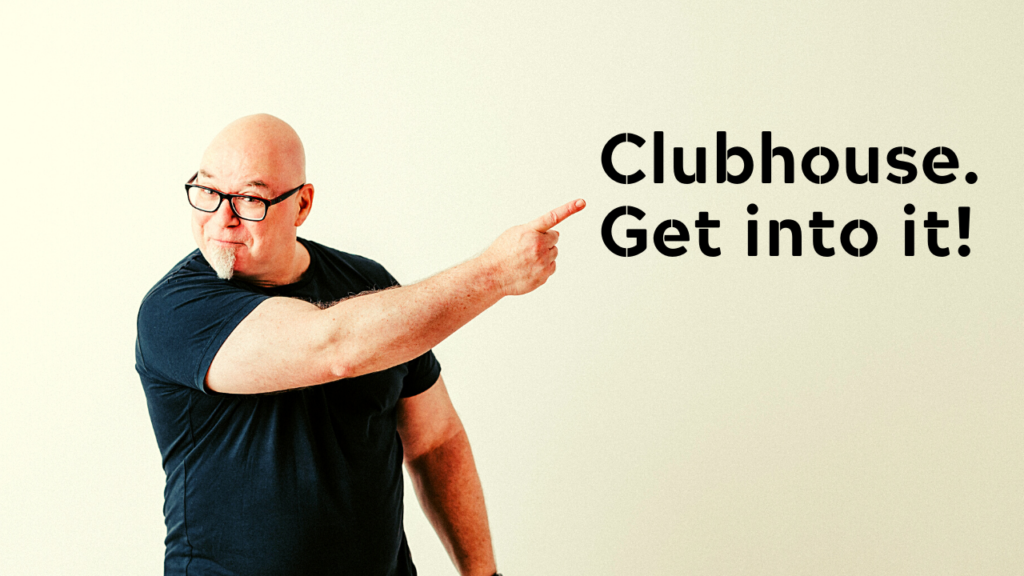
I hosted my first Clubhouse room the other day alongside my good friend, brand strategist Kate Ware.
It came after after spending many weeks dipping in and out of the social audio platform, and very much in line with my attitude of “just jump in and have a crack” when it comes to social media.
Luckily our room was pretty empty – pheww, there’s a quick learning curve if you want to master the moderating role on Clubhouse, and just like public speaking, it’s better to earn your stripes by starting small!
But I like what I see! To me, Clubhouse feels like early Twitter (2009-11) when it was a more civil place than it is currently, and emphasis was on having conversations with like-minded people.
Brian Fanzo, digital futurist at iSocialFanz and a bit of a test-crash dummy when it comes to new social platforms, says the voice-only app is a unique platform that could create a type of dialogue never seen before on social media.
“Clubhouse has transformed the importance of authenticity, intimacy and vulnerability within social media,” Fanzo says in this Social Pros podcast interview.
“You can’t mail it in (on Clubhouse) … you can’t fake it.”
Should you be on Clubhouse?
Firstly, what is Clubhouse?
In short, Clubhouse is a free audio-based iOS app whereby participants enter public (some are invite-only) ‘rooms’ where hosts moderate discussion around a particular topic.
Think of it as a virtual conference that you can attend in your underwear!

As a member of the audience, you can put up your virtual hand and the host may invite you up to the ‘stage’ to speak to the audience. Obviously, in large rooms (some are extremely well-attended and continue on for hours, if not days!), you might have your hand up for a while and never get invited up to speak. But hey, at least your arm won’t get tired!
I’ve had a casual eye on the social audio space for a while now – there have been numerous apps over time e.g. Riffr, Chirp, Voicebyte. But none that I’ve seen are standalone real-time ‘drop-in’ chat apps, which is essentially what Clubhouse is.
Synchronous platform
‘Traditional’ social audio apps are asynchronous, which means people can check in on them any time. Clubhouse, on the other hand, is a synchronous platform, so you have to be on the app to catch all the action.
There is no recording, everything takes place in real-time. Of course, this causes FOMO (fear of missing out), which in turn increases buzz for the app.
Should you be on Clubhouse?
While I generally advise my clients to concentrate on one social media channel (80% of effort), with a secondary network in your back pocket to have some fun on (20%) – I’m also a believer in getting out of your comfort zone and experimenting on social media, especially those channels that help you explore a new medium, in this case, audio.
Why?
Because I think it’s important to keep up with developments in the digital space.
Firstly, it keeps you fresh and relevant. Secondly, if you want to be seen as a progressive thought leader who shares valuable ideas with the world, then how you extend the reach of your voice and distribute your thoughts matters.

The best thing about building your personal brand on Clubhouse is that it’s very authentic and organic.
No selling, no pitching.
Turn up and add value.
Do it in a genuine way.
Respect the audience.
Get involved!
This is ‘old school’ social media, and it can be very powerful.
Personally, I think Clubhouse is worth testing out, if only so you can start getting your head around how audio is being used on social. If the medium gets bigger – and it looks like it will – then you will be well-placed to take things up a notch if this is something you want to do.
More than Clubhouse
Worth noting: social audio is way more than Clubhouse. Sure, Clubhouse might be commanding all the attention (for now), but there are dozens of social audio companies lurking in the wings.
Digital thought leader, Jeremiah Owyang, describes social audio as the “Goldilocks” medium for the 2020s:
“Text is not enough, and video is too much; social audio is just right”.
He might be on to something there!
Want to delve deeper?
- READ – Clubhouse 101: What you should know about the invite-only, audio social app (Washington Post)
- WATCH – Clubhouse App: How to Get Started (Social Media Examiner)
- LISTEN – Where Does Clubhouse Fit in Your Social Media Plan (Convince & Convert)
- RECOMMENDED – The Future of Social Audio: Startups, Roadmap, Business Models, and a Forecast (by Jeremiah Owyang)
P.S. Twitter Spaces
Interestingly, on the day I take Clubhouse a bit more seriously, I start seeing some people on Twitter using Spaces – a social voice chat room that was announced some time back but only now looks like it’s being rolled out.
The Spaces functionality has similarities to Clubhouse, but it’s too early to tell how well it will be adopted by Twitter folk.
Personally, I think Spaces has the potential to disrupt Clubhouse because of the massive user base that Twitter already has in place, but at the moment, Clubhouse is the place to be.
Spaces is probably better suited to ‘in the moment’ riffs on topical issues, while Clubhouse is good for longer planned events.
So the message is: WATCH THIS SPACE!




Leave a Reply